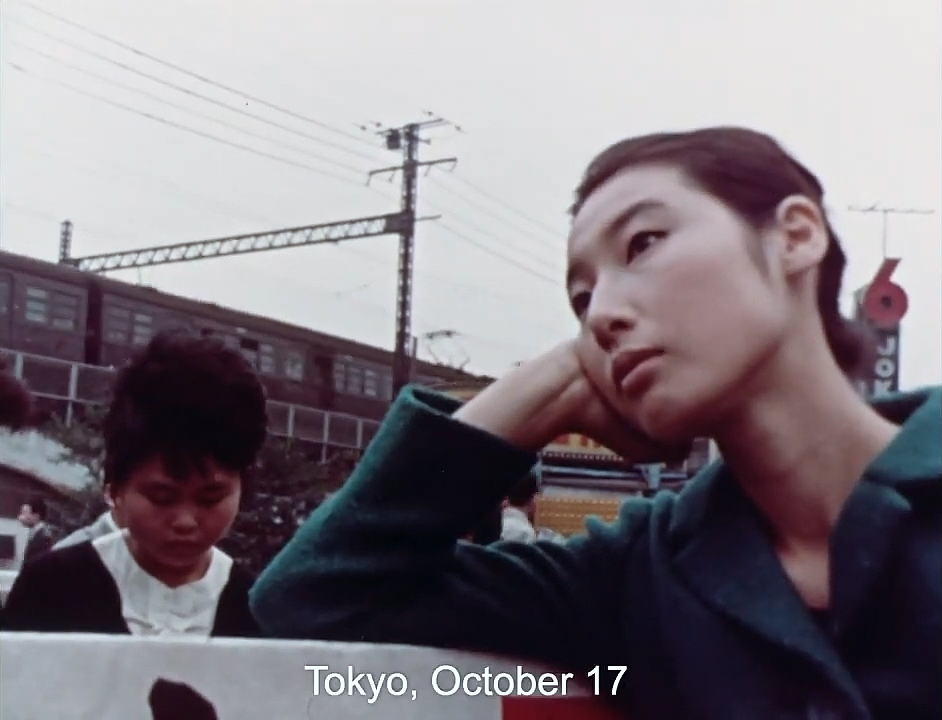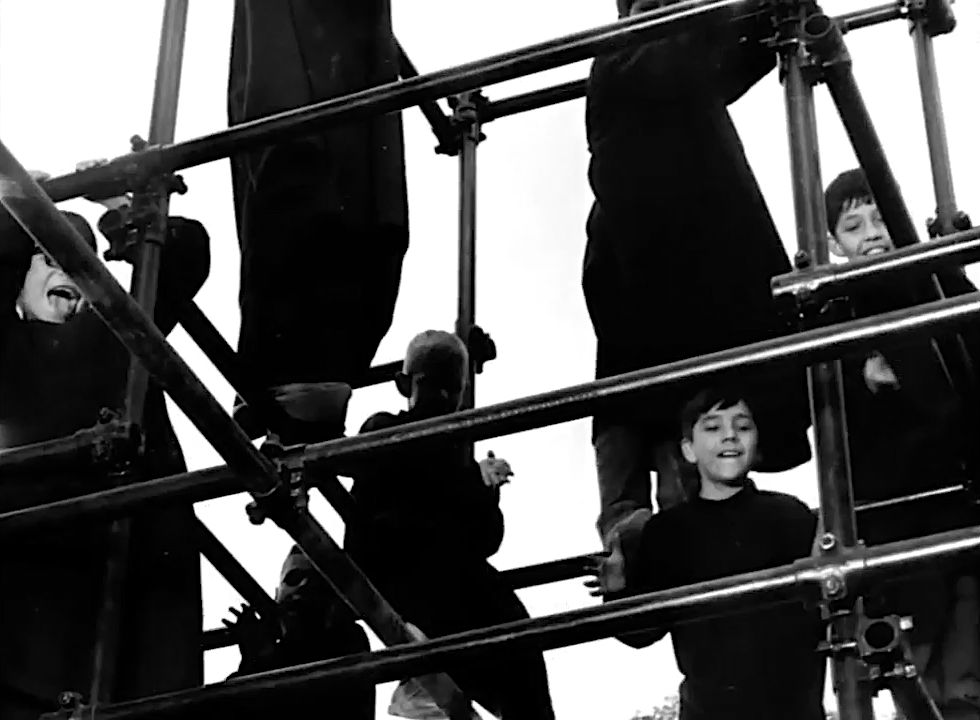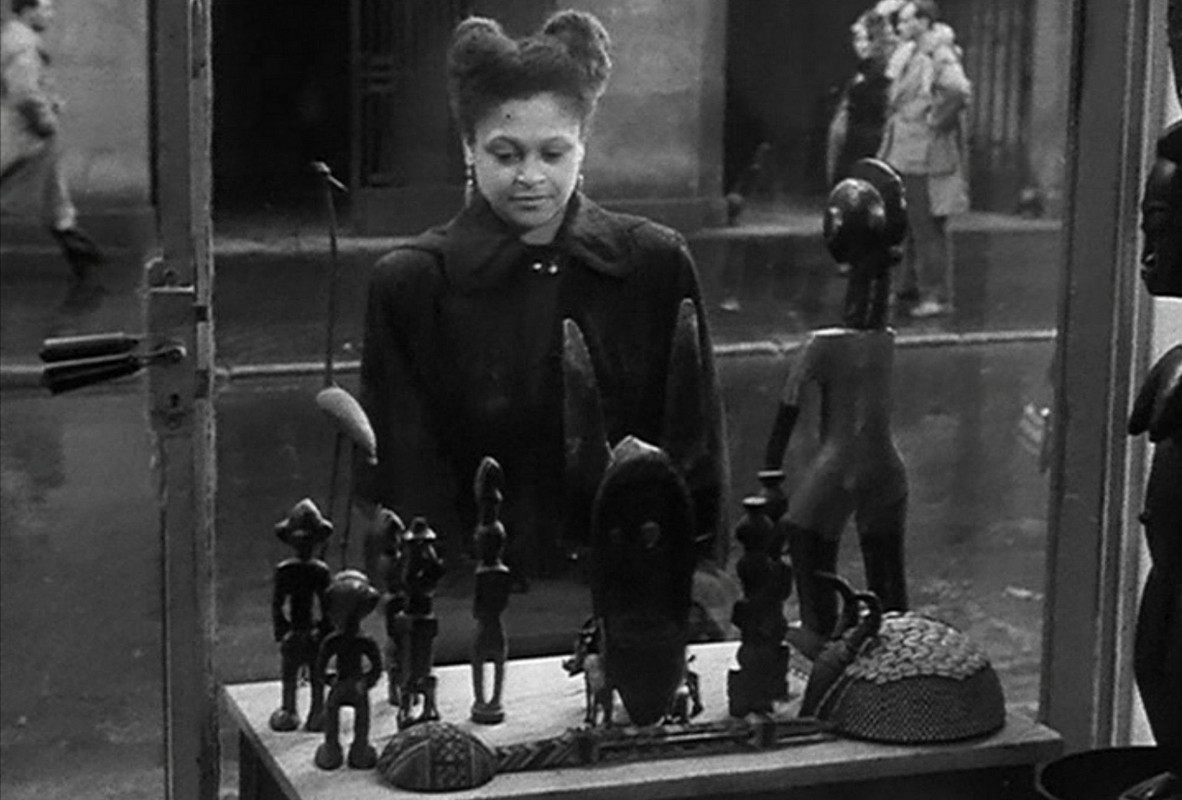“Mr. Everyman explains how to look like a Japanese and thus impress those wild and not very civilized people. Mrs. Everyman replies that for savages, they look remarkably civilized. Meanwhile, Mr. Everyman, seeing more people looking even more Japanese, is reassured. Mrs. Everyman sees soldiers parading in European uniform. She smiles ironically. But now a number of typical Japanese walk into the house. Her irony disappears. And Mr. Everyman is not ashamed to admit… he is mystified.”Le mystère Koumiko [不思議なクミコ / The Koumiko Mystery] (Chris Marker, 1965)
Oct
11
1964

The film covers multiple days. Koumiko thinks on October 17. DP: Chris Marker.
– narrator
essayfilm
“¡Mexicanos!
¡Vivan los héroes que nos dieron patria!
¡Viva Hidalgo!
¡Viva Morelos!
¡Viva Josefa Ortiz de Domínguez!
¡Viva Allende!
¡Vivan Aldama y Matamoros!
¡Viva la independencia nacional!
¡Viva México! ¡Viva México! ¡Viva México!”La fórmula secreta [Coca-Cola en la sangre / The Secret Formula] (Rubén Gámez, 1965)
Sep
16
El Grito de Independencia

Grinning seminary boys hang from monkey bars. DPs: Salvador Gijón, Rubén Gámez & Segismundo Pérez de Pedro 'Segis'.
El Grito de Independencia: ¡Viva México!
– El Grito
Accompanied by Juan Rulfo's poem, Gámez explores Mexico's identity, and loss thereof. Crying out for the Mexican with Coca-Cola in the blood.
“An object dies when the living glance trained upon it disappears. And when we disappear, our objects will be confined to the place where we send black things: to the museum.” Les statues meurent aussi [Statues also Die] (Ghislain Cloquet, Chris Marker + Alain Resnais, 1953)
May
18
International Museum Day

A Black African woman looks at objects of African origin – several statues, a mask, an object decorated with beadwork – in an antique store's window. Behind her white people pass by. It's raining. DP: Ghislain Cloquet.
Commissioned by the #PanAfrican literary magazine Présence Africaine to make a short film about African art, Chris Marker and his collaborator Alain Resnais – the latter still emboldened by his Van Gogh (1948) – were struck that unlike the Dutch painter's work, this #art was not on display in the Louvre or a similar cultural temple, but in the ethnological Musée de l'Homme.
– narrator
These works of “Negro” art that embody such a deep cultural and artistic significance for the creators and the people they are part of, were, within the boundaries of Western civilisation, merely things. The editing (Alain Resnais), photography (Ghislain Cloquet) and dialogue (Chris Marker) bring life to these works. Through these voices they speak to the viewer, escaping the institutes' walls.
This voice was enough for the CNC to censor Les statues meurent aussi; only the first third of the film, the segment that's not blatantly #AntiColonial, was to be watched. And to this day, the documentary still has not seen a restored, digital release.
“Back to the old tricks.”Vérités et Mensonges [F for Fake] (Orson Welles, Gary Graver, Oja Kodar + François Reichenbach, 1973)
March
29
Smoke And Mirrors Day

A wide shot of Orson Welles in his black cape and wide rimmed hat. His corpulence and black outfit sharply contrast with the bright, white background. The background is a white plane, held up by two assistants. The wide shot reveals that Welles, the white plane, and the assistants are on the platform of a train station, obscuring a passenger train if in close-up. DP: François Reichenbach.
Vérités et Mensonges is what it's actually called, but you may know it as F for Fake. Orson Welles and three uncredited fellow conspirators – Gary Graver, Oja Kodar, and François Reichenbach – delve into the world of #art forger Elmyr de Hory by way of his biographer Clifford Irving.
– Orson Welles
Welles et al free-associate with concepts of art, lies, #deception, and #authenticity. #Houdin, Welles, #Picasso and Hughes, hoaxers, hucksters and artists in their own right. And then it's over: this work of art, this sleight of hand, this demonstration of factuality, an exposé.